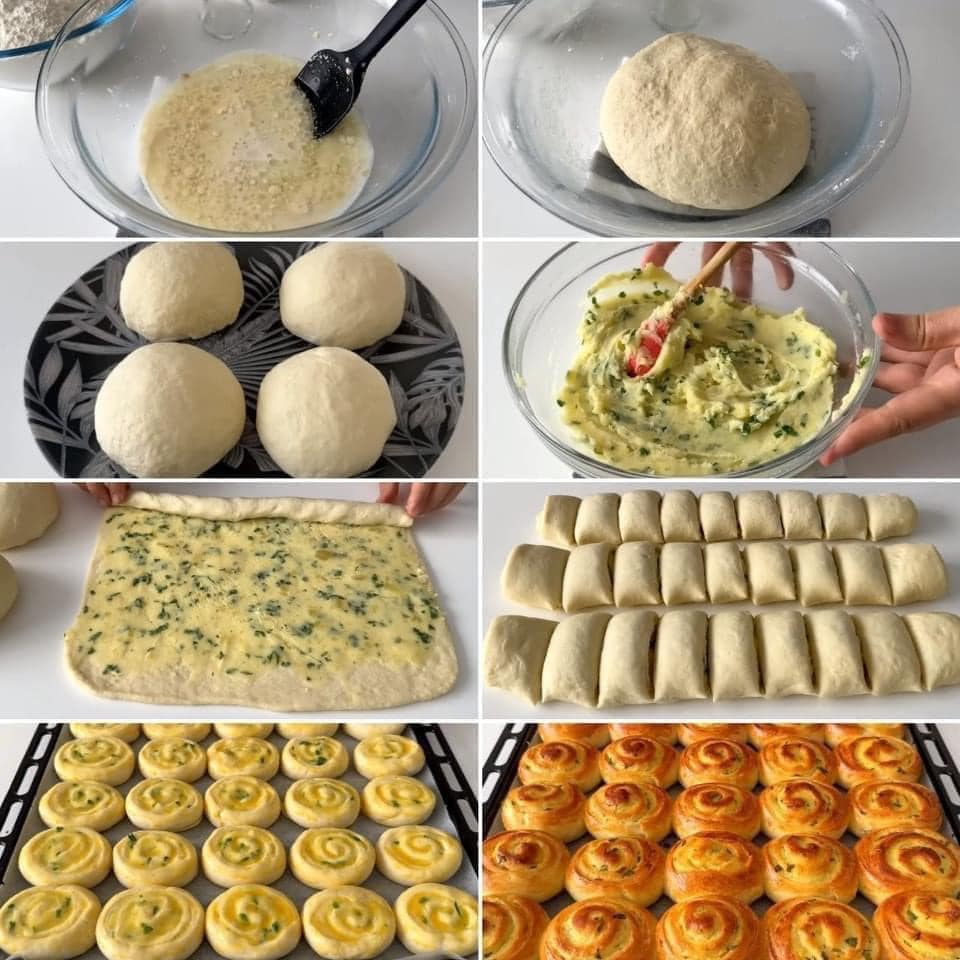ADVERTISEMENT
### **How to Make Soft Pastry Dough**
#### **Step 1: Mix the Dry Ingredients**
1. In a large mixing bowl, whisk together the flour and salt. If you’re making a sweet pastry, add the sugar to the flour mixture. This is the base for your dough, and combining the dry ingredients thoroughly ensures an even texture throughout the dough.
#### **Step 2: Add the Butter**
1. Add the chilled butter cubes into the flour mixture. Use a pastry cutter, fork, or your fingertips to work the butter into the flour.
2. The goal is to break the butter into small pea-sized pieces while keeping it cold. The butter should remain in small chunks as this helps create a flaky texture in the final pastry.
#### **Step 3: Add the Water**
1. Gradually add cold water, one tablespoon at a time, to the mixture. Mix gently with a fork or your hands until the dough just starts to come together.
2. Be careful not to overwork the dough—overmixing can make the pastry tough rather than soft and flaky. You want the dough to be slightly crumbly but moist enough to hold together when pressed.
#### **Step 4: Form the Dough**
1. Once the dough begins to come together, turn it out onto a clean surface. Gently knead the dough just enough to bring it into a ball. If the dough is too crumbly, add a little more water, a teaspoon at a time.
2. Shape the dough into a disc, wrap it in plastic wrap, and refrigerate for at least 30 minutes to allow it to firm up and rest. Chilling the dough is key to achieving a soft yet flaky texture.
#### **Step 5: Roll Out the Dough**
1. Once the dough has chilled, remove it from the fridge and place it on a lightly floured surface.
2. Roll out the dough with a rolling pin into a circle or rectangle, depending on the type of pastry you are making. Aim for an even thickness (about 1/8 inch) for a consistent bake.
#### **Step 6: Use the Dough**
1. Now that your dough is ready, you can use it to line pie or tart pans, or cut it into shapes for turnovers, pastries, or hand pies.
2. For pies and tarts, place the rolled-out dough into your pan and press it gently into the edges. Trim any excess dough and use it to make decorative edges if desired.
3. For turnovers or hand pies, fill the center with your desired filling (sweet or savory), fold the dough over, and seal the edges by pressing with a fork.
#### **Step 7: Bake Your Pastry**
1. Follow the baking instructions for the recipe you’re using the dough for. Typically, a soft pastry dough bakes at 350°F (175°C) for about 20-30 minutes, depending on the size and type of pastry. Bake until golden brown and crisp on the outside.
—
### **Tips for the Perfect Soft Pastry Dough**
– **Use Cold Ingredients**: For the best texture, make sure your butter and water are cold. Cold butter creates flaky layers in the dough, resulting in a soft and buttery pastry.
– **Don’t Overwork the Dough**: Mix and knead the dough gently. Overworking it can lead to a tough texture. You want the dough to just come together.
– **Chill the Dough**: Always refrigerate the dough before rolling it out. This helps prevent the butter from melting and ensures the dough holds its shape during baking.
– **Customize the Dough**: If you’re making a sweet pastry, feel free to add a little more sugar or vanilla extract to enhance the flavor. For savory pastries, try adding a pinch of dried herbs or grated cheese to the dough.
– **Make It Ahead**: This dough can be prepared in advance. Simply wrap it tightly in plastic wrap and refrigerate it for up to 2 days or freeze it for up to 3 months. Thaw it in the fridge overnight before using.
—
### **Serving Suggestions**
– **For Sweet Pastries**: Use the soft pastry dough to make fruit tarts, cream-filled pastries, or jam-filled turnovers. You can also sprinkle some powdered sugar over the top once they’re baked for a lovely finishing touch.
– **For Savory Pastries**: This dough works wonderfully for quiches, hand pies filled with vegetables or meats, or savory cheese pastries. Serve with a side of salad for a complete meal.
– **As a Pie Crust**: This soft pastry is perfect for both fruit pies and cream pies. Its rich flavor and tender texture complement any type of filling.
—
### **Why This Recipe Works**
This soft pastry dough strikes the perfect balance between tenderness and flakiness, thanks to the generous amount of butter and the technique of keeping everything cold. The dough is versatile enough for a wide range of pastries, whether you’re making something sweet or savory.
The key to achieving a soft, melt-in-your-mouth pastry is keeping the ingredients chilled and handling the dough minimally. These steps ensure that the butter remains in small pieces, which will create pockets of flakiness as the dough bakes. Whether you’re a beginner or an experienced baker, this soft pastry recipe is easy to follow and delivers consistently delicious results.
—
### **Conclusion**
With this **soft pastry dough** recipe, you have the perfect base for an array of delectable baked goods. From flaky fruit tarts to savory hand pies, this dough is as versatile as it is delicious. Whether you’re preparing for a special occasion or simply enjoying a cozy baking session at home, this pastry dough will provide the soft, buttery texture you crave.
Give it a try and get ready to create mouthwatering pastries that are sure to impress. Happy baking!
ADVERTISEMENT
